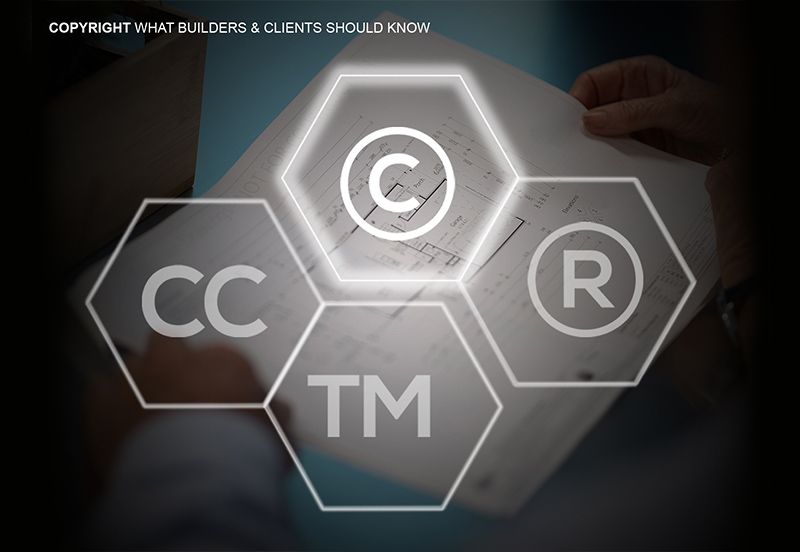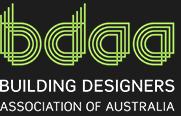Copyright… What builders and clients should know!
Introduction to Copyright & Single Use Licencing!
Far too often in our daily operations we see builders and clients not having a clear understanding of the laws relating to copyright and single use licencing. As professional residential building designers it is our responsibility to understand these laws that directly relate to our industry and the unlawful use of not only our designs but other architects and building designers. Below is a Workplace Services Information Sheet published by the HIA (April 2011), we believe this document is a great reference which outlines the laws of design and single use copyright.

What is copyright?
Drawings, house plans and sketches are protected by the laws of copyright. This means that the owner of copyright has the exclusive right to use their own work. Copyright can be owned, assigned, bought and sold, however this would need to be done by written agreement.
Do I have to register my copyright?
No, there is no registration procedure for copyright. Generally speaking copyright is created when the creator puts their ideas onto paper.
Who owns the copyright?
This will depend on how the plans came into existence and what contractual agreements were in place for their creation.
- Did you or your employee draft the plans during the ordinary course of employment?
If the answer is YES, then the copyright in the plans will be held to be the property of you or your Company.
- Did you engage an architect or draftsperson to draw up the plans?
If the answer is YES, they will retain ownership in the copyright unless you have made an alternative agreement in writing. In some cases, builders will pay a fee to the architect or draftsperson to use the plans for a particular job. However this does not necessarily mean that you have purchased the right to use those plans as you see fit and as many times as you like. The payment of a license fee will usually only entitle you to use those plans for one job.
- Did the client provide you with the plans?
If the answer is YES, you should ask the client:
- Who they had the plans drawn by and enquire about any agreement the client might have had with that person in relation to copyright.
- If they have copied the plan from any other design, you should ask for a copy of the design.
- If they have inspected a display home or taken ideas from a display home.
How do I know if I am infringing on another person’s copyright?
You cannot reproduce a plan or part of a plan without the copyright owner’s permission. If you are building from plans without the permission of the owner, you are breaching copyright.
What can I do to avoid infringing on copyright?
- Request evidence from an owner that they have permission to use the plans that they have given you. Before starting work, you should request that the owner provide written evidence that they own the plans or that they have permission from the owner to use the plans for construction of their home.
- Look to your building contract. In the event that you do not receive evidence or permission, your building contract provides protection in circumstances where the owner is providing the plans or designs.
- In signing the contract, the owner indemnifies you for all costs and expenses incurred if a claim relating to a breach of copyright is bought against you. This indemnity has effect in cases where you are carrying out the works in accordance with plans which are:
- Supplied by the owner
- Prepared under instruction of the owner
- Prepared from sketches provided by the owner
Frequently Asked Questions on Copyright
If the client developed the sketch and it is not a copy of someone else’s plan then the client owns the copyright to the sketch.
The infringing builder becomes a party to the breach of copyright and is most likely to be joined with the client in a claim.
Technically no, but this will not stop the claiming party from joining the builder with the infringing client in an action for damages. The builder will need to prove that they did not know about the breach of copyright. Whilst the builder will normally have a right of indemnity against the owner, this right will need to be established, and assumes the owner has capacity to pay.
The draftsperson or professional owns the copyright to the plan drawing unless it is assigned to another party. The client owns copyright in the original sketch.
How can he/she be sure that the other builder is breaching copyright?
You cannot be totally sure unless you know how the other builder developed the disputed plan. You will need to show that the disputed plan is substantially the same as your plan. You will need to identify unique features that are your copyright, and you will need to get the appropriate legal advice.
Unfortunately there is no straight forward answer to this question. Some factors to consider when assessing the chances of breaching someone’s copyright include:
- There is no set percentage of a plan etc that you can change in order to avoid breaching someone’s copyright.
- Consider the history and development of the house plan, how have you come up with the idea?
- Have you drawn on your own past experiences when altering the existing designs?
- How similar are the two sets of plans? Is that a substantial likeness? If there is, you may be breaching copyright.
- Are you adding anything or making any changes that could be consider a unique design or feature? If you are, you may be making significant changes to the design to avoid breaching another persons’ copyright.
The builder should immediately seek legal advice.
* References: Workplace Services Information Sheet HIA
-
Suite 30503, Level 5, Tower 3 Commercial Design 9 Lawson Street, Southport QLD 4215.
ABN: 89135124775. QBCC Licence: 1181286.
Copyright 2021. I Want That Design. All Rights Reserved.
 My Account
My Account